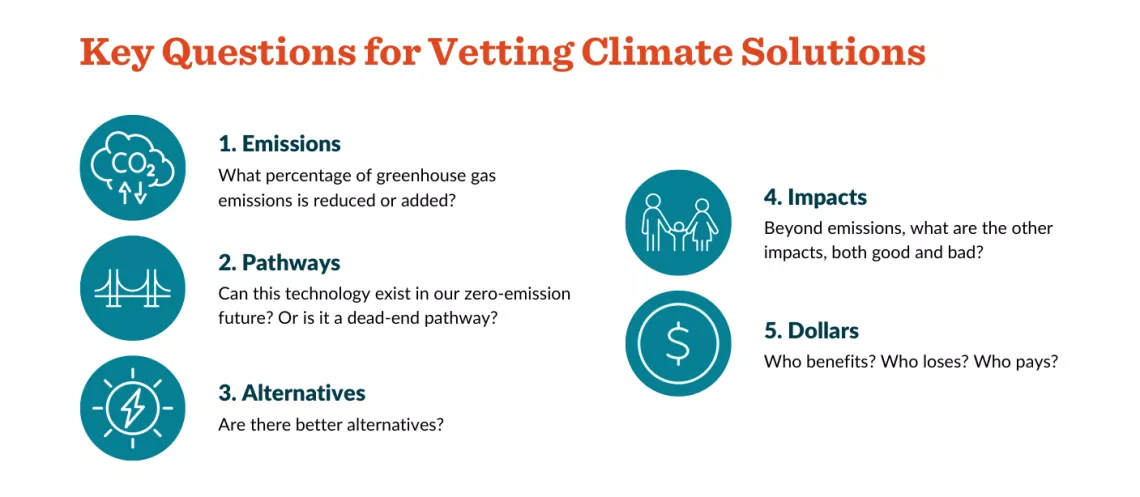A primer on some of the more widely promoted greenwashed solutions from the fossil fuel industry.
Fake: Renewable Natural Gas (RNG)
“Renewable” gas, derived from methane captured from organic waste sources like landfills and farms, seems promising at first glance. But it is not a practical solution. Experts estimate that RNG could only replace a small fraction, about 2 to 5 percent, of the total gas consumption in the United States in 2019. The infrastructure required to convert waste into usable gas is expensive, and regardless of its source–be it fracking, landfills, or factory farm manure– gas presents risks to our health and the environment.
Real: Electrification, Zero Waste, and Sustainable Farms
Instead of investing more ratepayer money in gas infrastructure, we must get ready for renewable energy by electrifying buildings using readily available technology. And we need to move to zero waste and sustainable farming practices to reduce emissions from landfills and factory farms.
Fake: Carbon Pipelines
Big polluters have a plan to build a network of pipelines to take carbon dioxide “captured” from ethanol and fertilizer and transport it to North Dakota where it will be used as a fracking material to get more oil from the ground. This form of carbon capture utilization and sequestration (emphasis on the “utilization”) is called “Enhanced Oil Recovery” (EOR) and is a perfect example of a dead-end pathway where polluter interests are seeking greater investments in systems we need to stop using. The Iowa chapter of Sierra Club has been doing a great job opposing these pipelines and we will be seeking ways to help.
Real: Carbon Sequestration in Forests
In the northern 1/3 of Minnesota, there are lowland forests and peatlands that provide excellent habitat and naturally sequester a huge amount of carbon in plants and soils. Since these lowlands are wet and inaccessible to vehicles, both logging and harvesting of peat is currently limited. But that could change as the climate heats up. The time to protect these lands is now, which is why the Sierra Club will work to broaden and deepen our coalition to establish a Lowland Carbon and Habitat Reserve.
